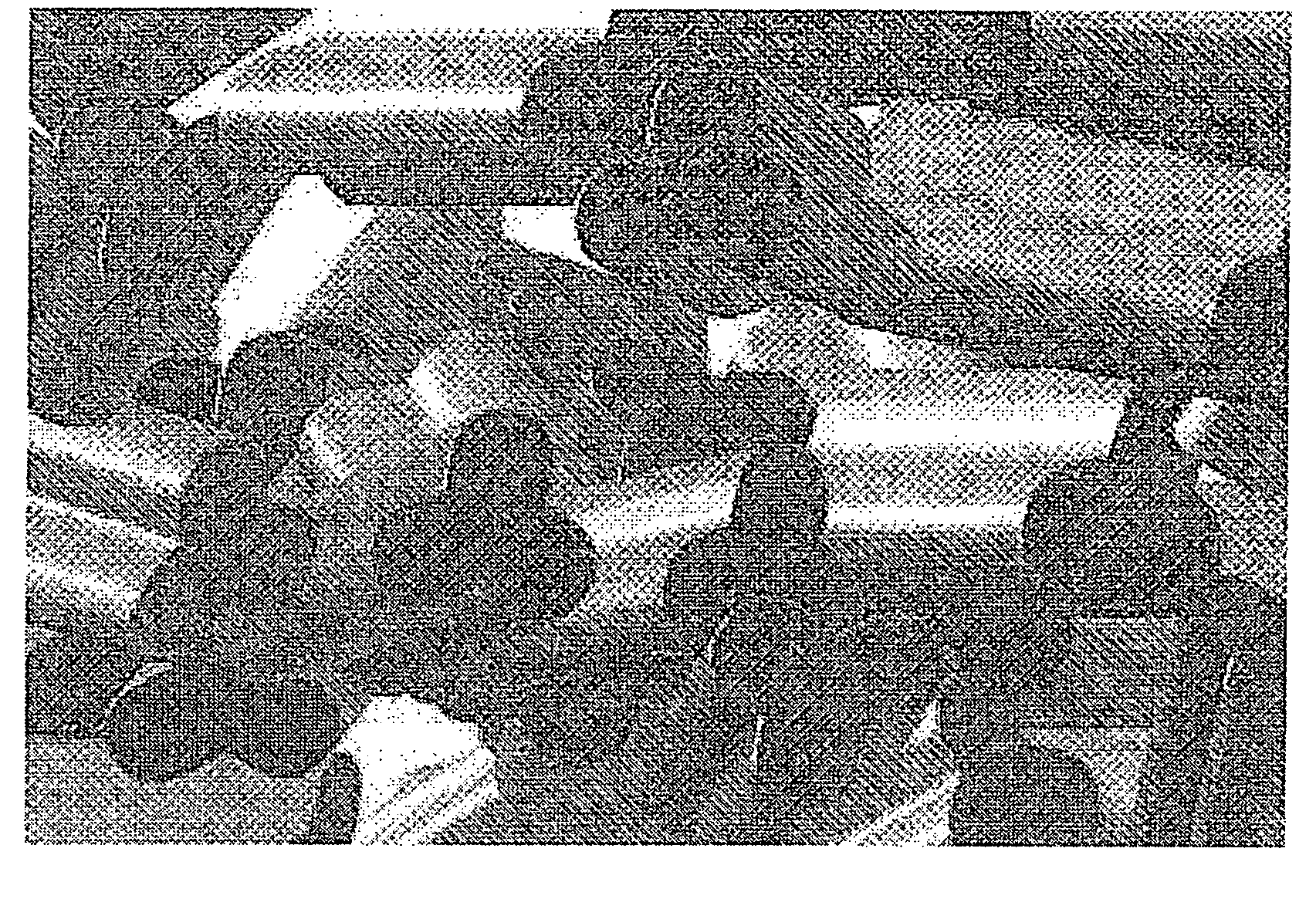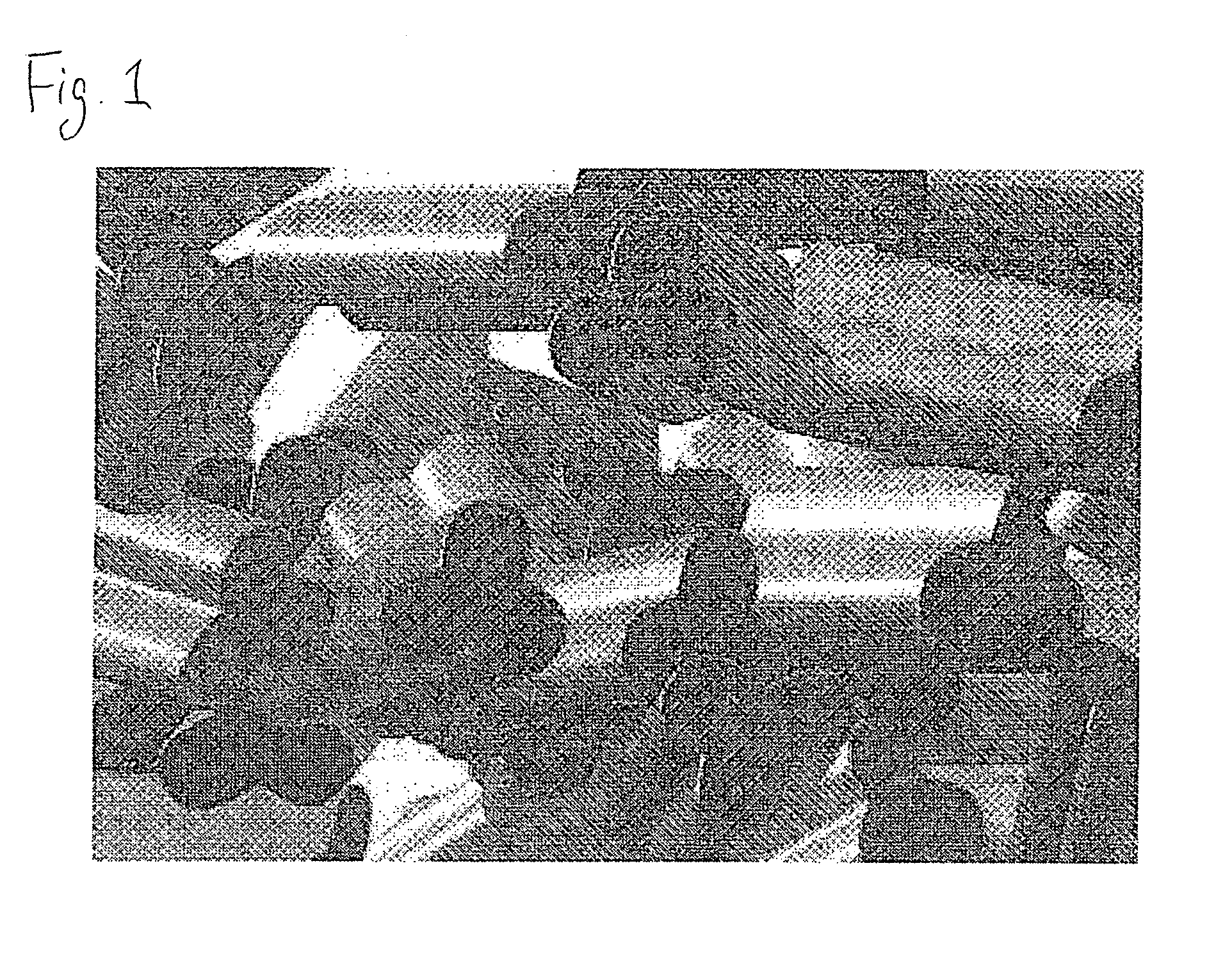Hydrodesulfurization catalyst and hydrodesulfurization process for gasoline fractions
a technology of hydrodesulfurization catalyst and gasoline fraction, which is applied in the direction of physical/chemical process catalyst, metal/metal-oxide/metal-hydroxide catalyst, etc., can solve the problems of insufficient prevention of octane reduction and ineffective equipment investment cost, so as to reduce the reactivity of desulfurization and facilitate desulfurization. , the effect of reducing the number of sulfur
- Summary
- Abstract
- Description
- Claims
- Application Information
AI Technical Summary
Benefits of technology
Problems solved by technology
Method used
Image
Examples
example 1
[0070]In a steam jacket-equipped reactor there were mixed 400 g of aqueous aluminum sulfate (3.9 wt % alumina concentration) and 500 g of sodium aluminate (1.9 wt % alumina concentration) while heating at 60° C., to obtain an alumina hydrate slurry. After filtering and washing the slurry, 50 ml of 27% aqueous ammonia and 100 ml of distilled water were added and the mixture was stirred at 90° C. for 12 hours to obtain alumina hydrate with an alumina concentration of 24%. The obtained hydrate was concentrated and kneaded while maintaining the temperature at 95° C., and then 110 mL of aqueous copper nitrate containing 140.0 g of copper (II) nitrate pentahydrate was added.
[0071]After kneading, the mixture was extrusion molded into a 1 / 16 inch columnar shape, dried at 110° C. for 2 hours and then fired at 550° C. for 1 hour to obtain a support. The copper content in the support was 5.1 wt % based on oxides.
[0072]Next, 330 mL of water was added to 150 g of ammonium molybdenate ((NH4)6Mo7O...
example 2
[0075]A catalyst was prepared in the same manner as in the same manner as Example 1, except that aqueous zinc nitrate containing 155.0 g of zinc (II) nitrate heptahydrate was used instead of the aqueous copper nitrate containing 140.0 g of copper (II) nitrate pentahydrate. The zinc content of the support was 4.9 wt % in terms of oxides, and the catalyst had a specific area of 220 m3 / g and a pore volume of 0.44 mL / g. The supported metals were 4.8 wt % Ni as NiO and 14.8 wt % Mo as MoO3.
[0076]A 50 g portion of the obtained catalyst was subjected to pre-sulfurization in the same manner as Example 1. This was followed by hydrodesulfurization under the same conditions as in Example 1. As a result, the sulfur content of the obtained product oil was 3.9 ppm by weight (96% desulfurization efficiency), and the olefin hydrogenation rate was 14% (RON=89).
example 3
[0077]An alumina hydrate was prepared in the same manner as Example 1, and after concentrating and kneading while maintaining the temperature at 95° C., it was extrusion molded into a 1 / 16 inch columnar shape, dried at 110° C. for 2 hours and then fired at 550° C. for 1 hour to obtain a support. After impregnating 310 mL of aqueous copper nitrate containing 87.5 g of copper (II) nitrate pentahydrate into 500 g of the obtained support by the pore-filling method, the support was fired at 550° C. for 1 hour. The copper content in the support was 5.2 wt % based on oxides.
[0078]Next, 220 mL of water was added to 100 g of ammonium molybdenate ((NH4)6Mo7O24.4H2O), the mixture was heated to dissolution, and then 46 g of basic nickel carbonate (NiCO3.2Ni(OH)2.4H2O) was added to the aqueous solution to prepare an impregnating solution. After then impregnating it into 330 g of support by the pore-filling method, the support was fired at 550° C. for 2 hours. The specific area of the catalyst ob...
PUM
| Property | Measurement | Unit |
|---|---|---|
| temperature | aaaaa | aaaaa |
| pressure | aaaaa | aaaaa |
| mean pore diameter | aaaaa | aaaaa |
Abstract
Description
Claims
Application Information
 Login to View More
Login to View More - R&D
- Intellectual Property
- Life Sciences
- Materials
- Tech Scout
- Unparalleled Data Quality
- Higher Quality Content
- 60% Fewer Hallucinations
Browse by: Latest US Patents, China's latest patents, Technical Efficacy Thesaurus, Application Domain, Technology Topic, Popular Technical Reports.
© 2025 PatSnap. All rights reserved.Legal|Privacy policy|Modern Slavery Act Transparency Statement|Sitemap|About US| Contact US: help@patsnap.com


